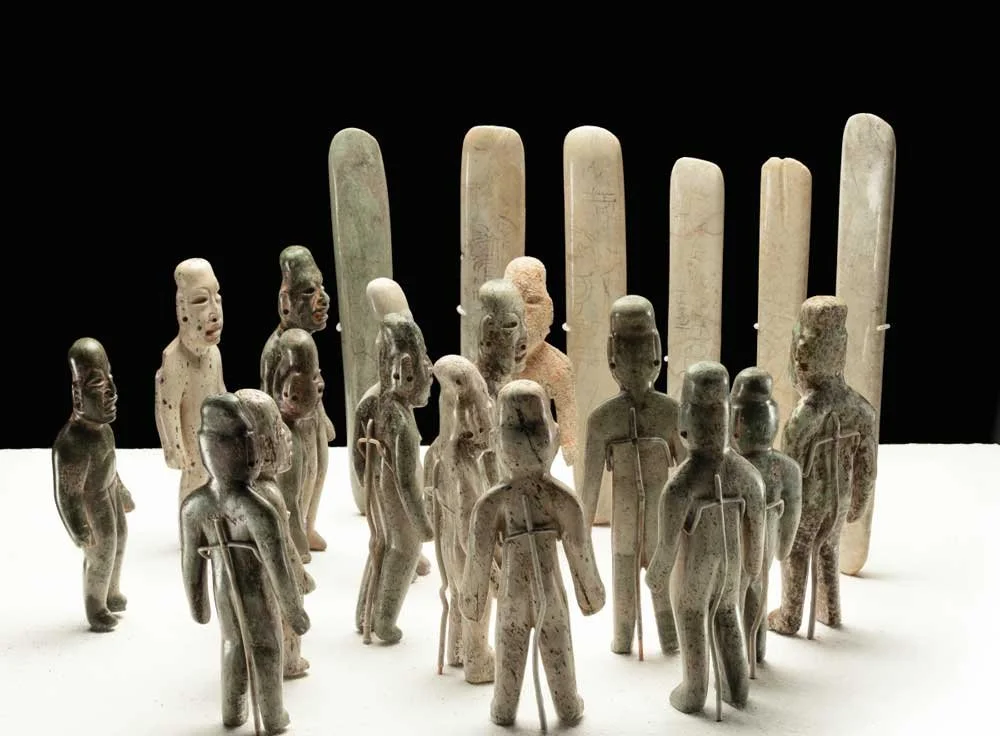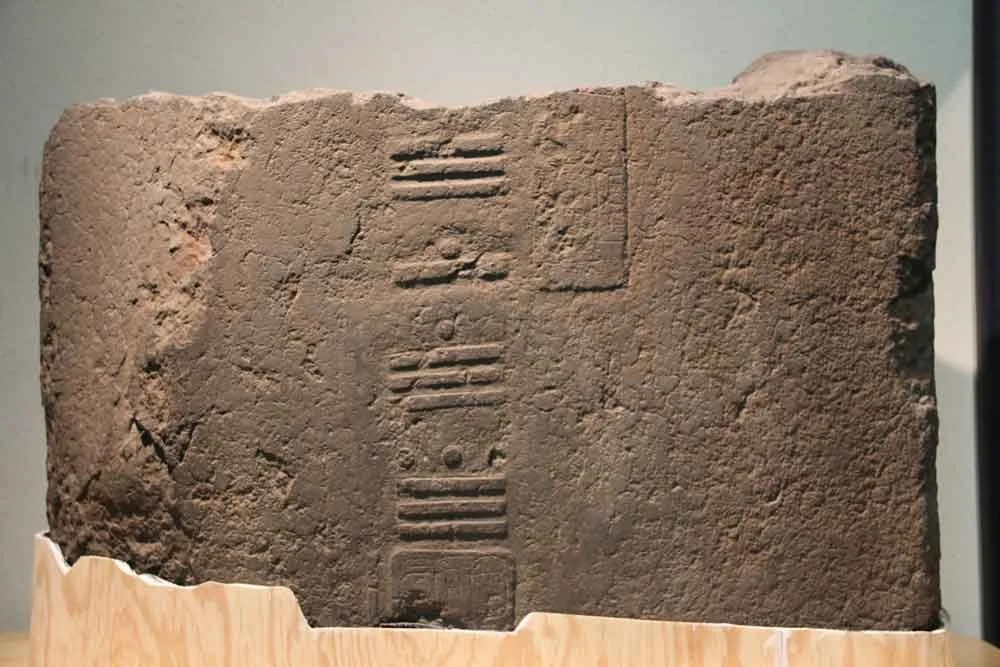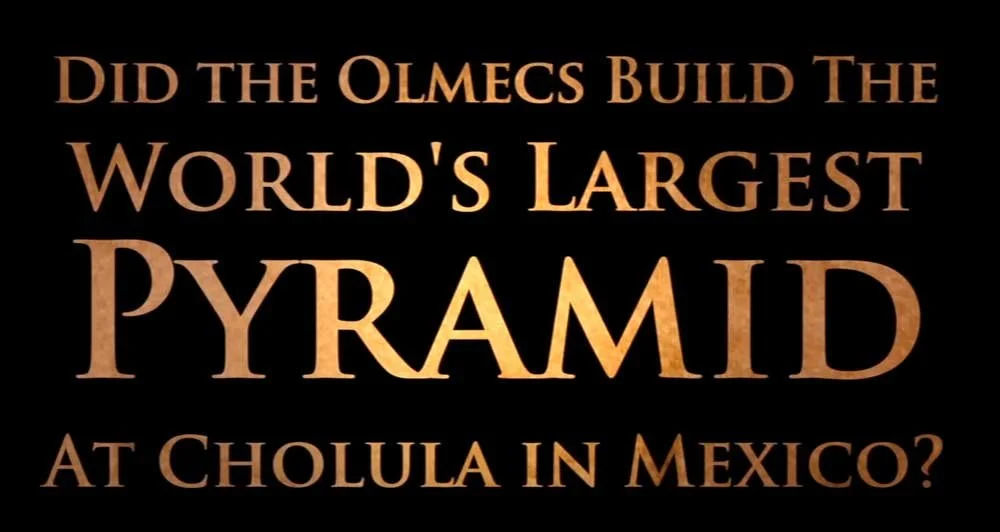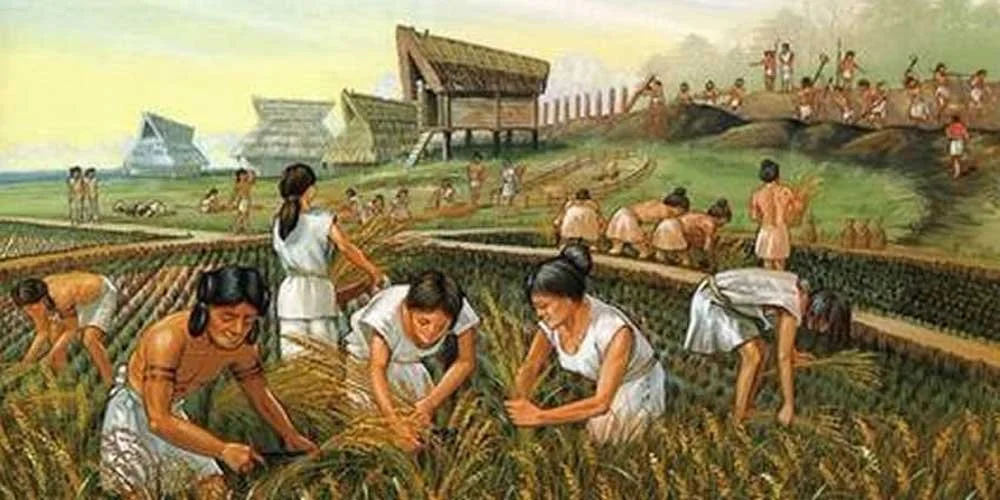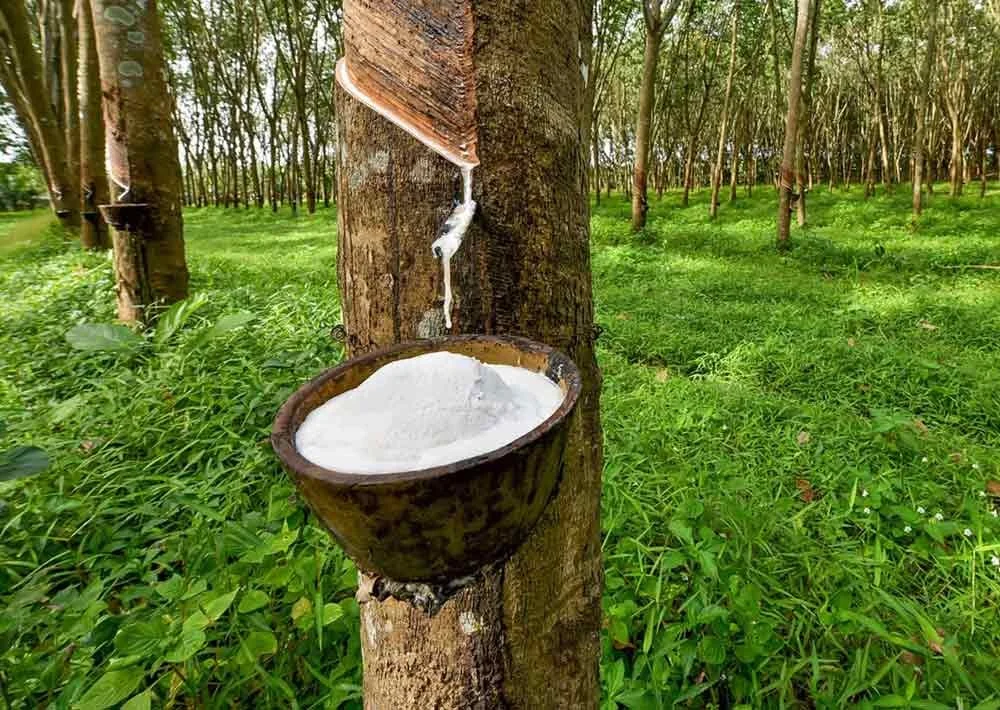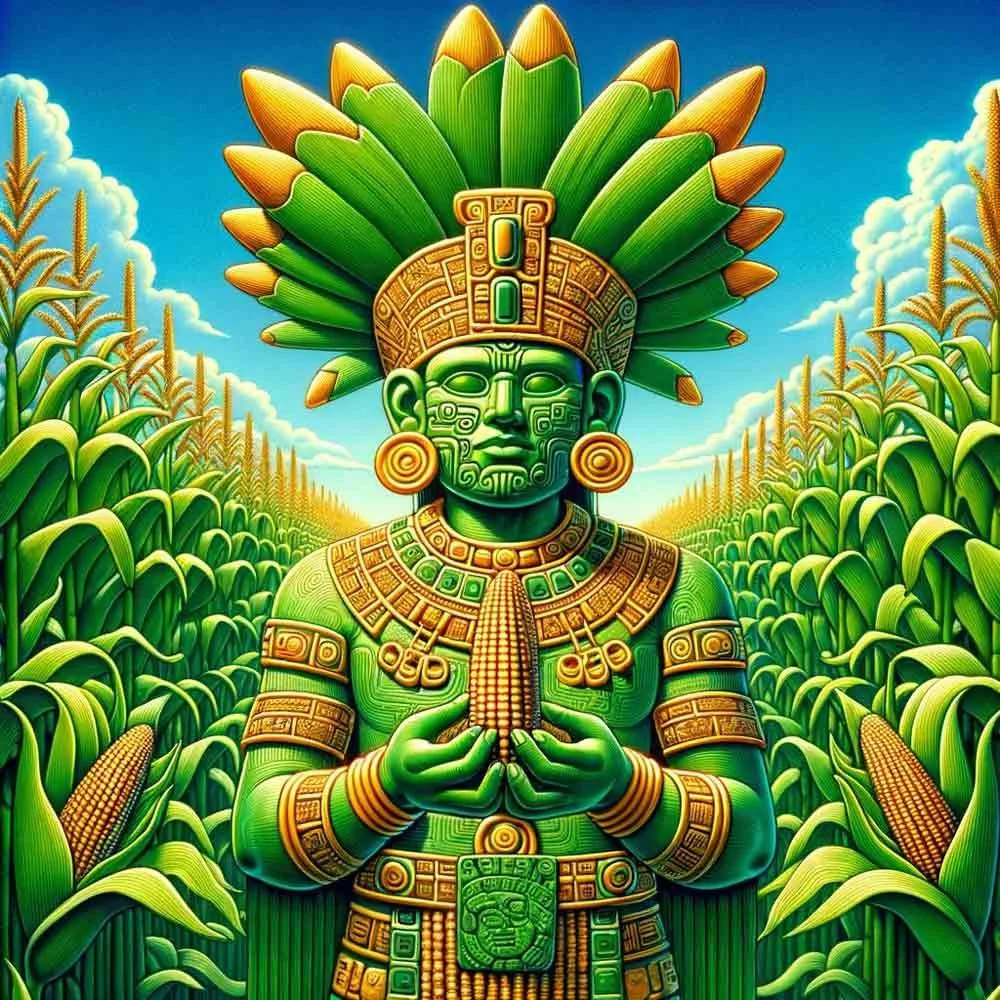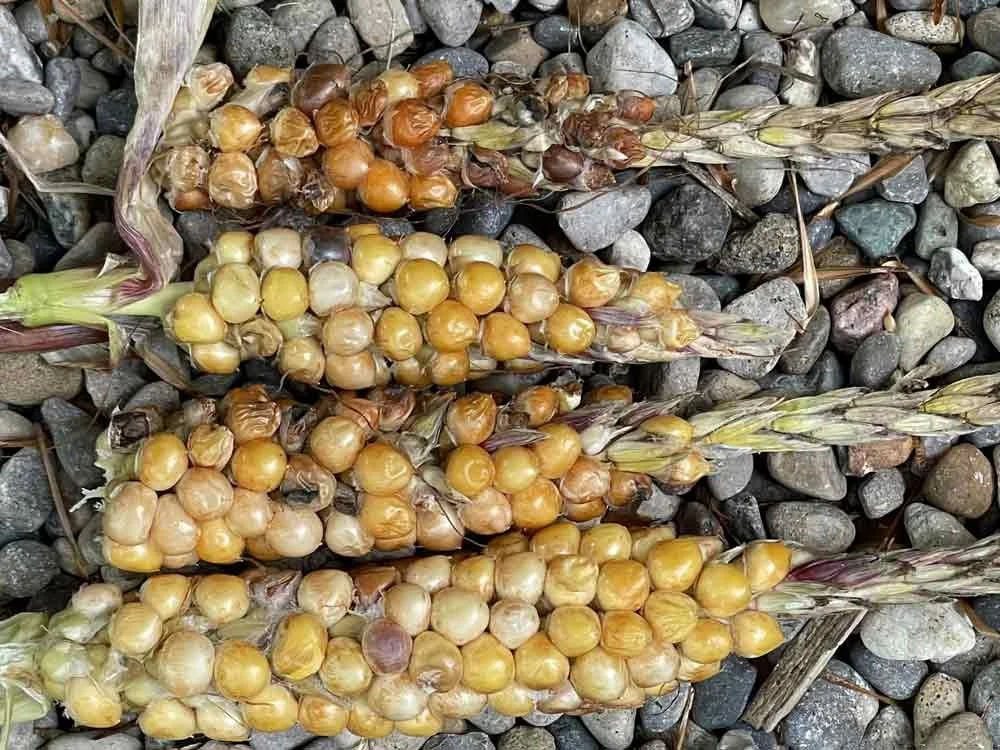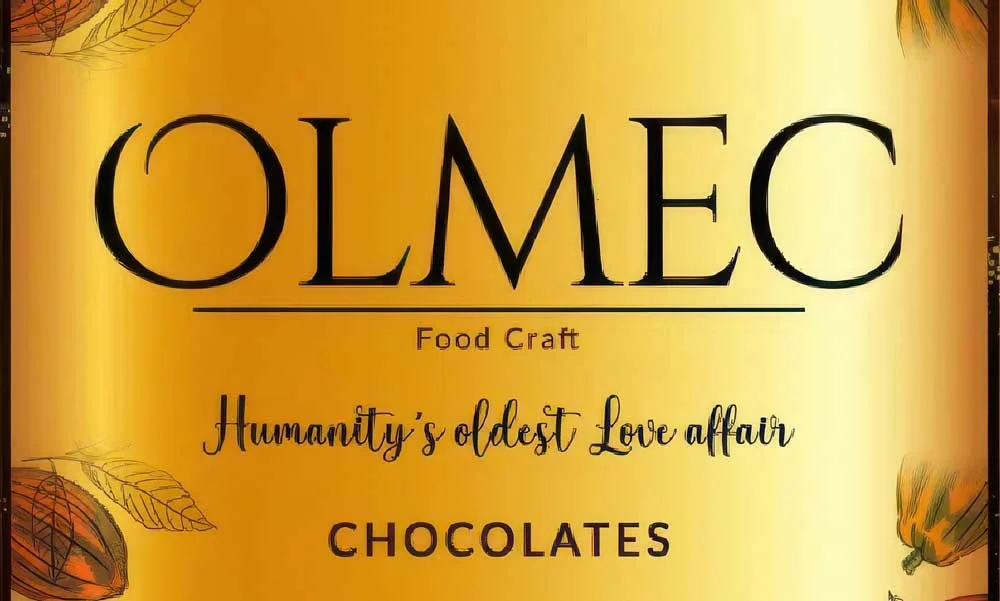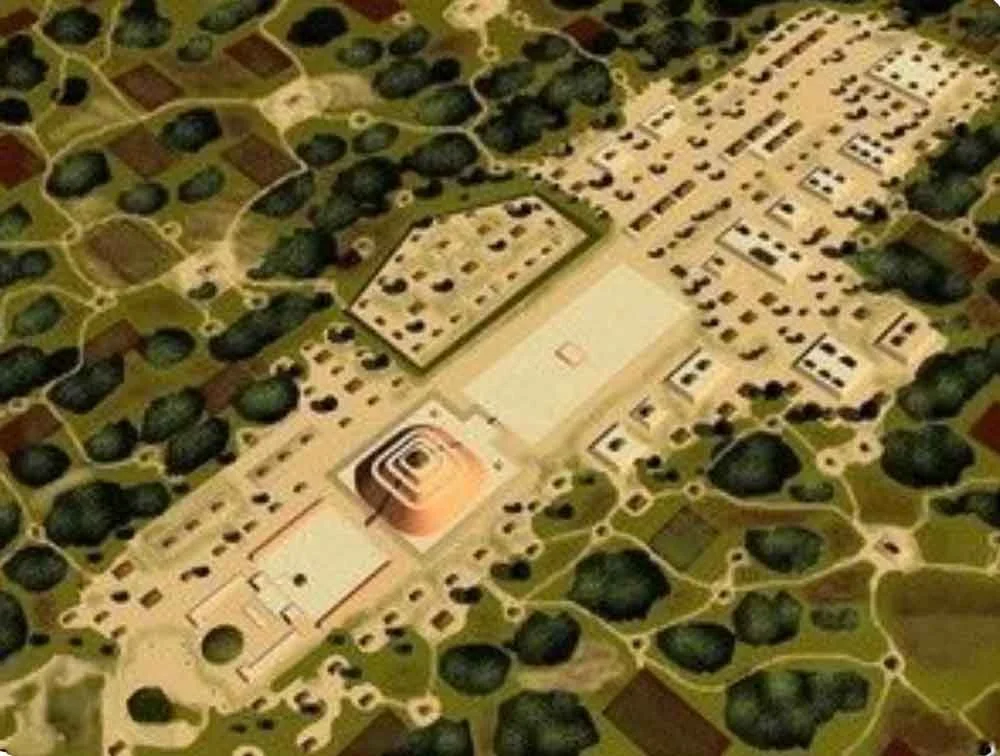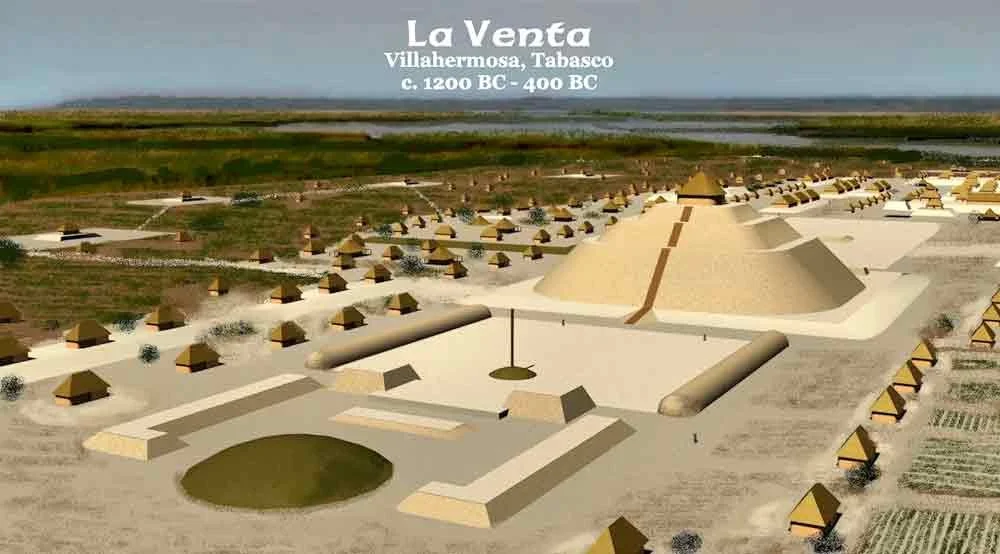THE OLMEC LEGACY: Part 1
START at the beginning 0:00
STOP at 7:26
Look at the timeline at the top of this page, or look at the first graphic below. What are the dates of the Olmec civilization?
Matthew and Marion Sterling decoded the date on an Olmec stela; a stela is a stone slab with writing or pictures carved on it. What was that date?
When the Sterlings shared their discovery, did everyone believe them?
What new technology proved that the Sterlings had been correct all along?
Why is it difficult to work out what the Olmec civilization was like?
Why were the Olmec’s called the “rubber people”?
Did the Olmecs call themselves “Olmec”?
Name at least three crops that allowed the peoples of Mesoamerica to live in one place.
When was maize (corn) first domesticated in Mexico?
What is the largest structure in La Venta’s main plaza?
• READ •
THE OLMEC LEGACY: Part 1
The Olmecs are best known as the creators of Mexico’s first civilization,
and for making some of the country’s most extraordinary works of art.
Introduction
In 1939 Matthew Sterling had just arrived in Veracruz Mexico for a new season of excavations at the site of Tres Zapotes.
Sterling was searching for answers about a relatively recently identified civilization in Mexico - the Olmec. Tres Zapotes had already been identified as an Olmec site but at the time not much was known about Olmec civilization.
There was only a delicate consensus about who the Olmec were.
Most scholars assumed that this civilization was a fairly recent player in Mesoamerican history and that they would have been contemporary with the classical Maya in the second half of the first millennium CE.
It wasn't an unreasonable conclusion at the time.
Remember this was before carbon dating was being used in archaeology and back then the best way to date Mesoamerican civilizations was by stratigraphy or even better by cataloging the dates on their monument inscriptions.
Sterling however suspected that this civilization was much older. Unfortunately for Sterling he had no hard proof to back up his theories, that is until one day when he chanced upon an incredible discovery.
A broken Olmec stela with a partial date inscription. Although the second half of the date inscription was missing, he and his wife Marion deduced that the date on the stela was September 3rd 32 BCE, by far the oldest written date ever recorded in Mesoamerica.
When this was published it was hailed as a great... oh wait actually no, it was immediately derided by their colleagues as the incredulous result of over-enthusiastic speculation. Everyone insisted that the Olmec civilization could not have been that old. Bummer. But not for long.
As luck would have it the Sterlings would be vindicated in the ensuing decades by carbon dating and later by the discovery of the rest of the stela by a local farmer which allowed archeologists to verify the Sterlings' proposed date. They had been right all along.
This discovery stunned the academic world. It proved the true antiquity of the Olmec and showed that they were the first major civilization in Mesoamerica.
Let's examine the origins of Mesoamerican civilization by exploring its first great civilization - the Olmec.
Many aspects of Mesoamerican culture such as calendars, ball games, and the Mesoamerican pantheon can be traced back to Olmec influences, and these influences were tremendous. Before we can discuss the Maya, the Zapotec, the Toltecs, and the Aztecs, we need to examine the Olmec and their contributions to Mesoamerican civilization.
Unfortunately the Olmec left us no discernible written histories nor any oral traditions. All that is known about the Olmec comes to us from archeology or from the study of subsequent cultures.
As much as we know about the Olmec, we are clueless about some basic facts like the language they spoke or what they called themselves. In fact, the name Olmec comes from the word "olmec," a Nahuatl word meaning "rubber people."
• Rubber comes from trees! Rubber was produced by the Olmecs.
Rubber was produced by the region's inhabitants as far back as Olmec times all the way until European contact, hence the name. Just keep in mind that Olmec is the name retroactively applied to them by modern scholars. It's not a name that they would have used themselves.
Before Olmec Civilization
Before Olmec civilization arose, the people of Mesoamerica had only recently begun living a sedentary lifestyle. What made this shift possible was the domestication of crops like gourds, squash, beans, avocados, and chilies, but above all corn, or as we ought to refer to it, maize.
Maize (corn) was first domesticated in Mexico between 7000 BCE and 6500 BCE and it would change everything as it was cultivated more and more intensively. So important was maize to the Mesoamericans that most cultures had a maize deity in some form.
On an interesting note, I know maize was originally domesticated from the teosinte plant. It's a testament to their agricultural prowess that this tiny grass was fashioned into one of the most important staple crops in the world. I mean just look how tiny those cobs are.
• Teosinte
If you aren't very impressed by maize, I'd also like to point out that the Olmec were the first civilization to have chocolate. So let's take a moment to thank the Olmecs for helping bestow chocolate on this cruel world, and then let's get back to our topic.
By the beginning of the second millennium BCE, civilization was beginning to take shape. What's fascinating about the development of Mesoamerican civilization is that it occurred very late compared to other early civilizations, but when it did it blossomed with astonishing speed.
Archaeologist Brian Fagan sums this up excellently: "A vast chasm separates the thousands of farming villages scattered throughout Central America in 2000 BC and the sophisticated civilizations that arose with dramatic suddenness only fifteen hundred years later."
Nothing epitomizes that drastic change better than the rise of the Olmec. For over a thousand years, from 1700 BCE to the end of the first millennium BCE, the Olmec were a cultural juggernaut in Mesoamerica.
Despite being largely confined to the Mexican Gulf Coast in the modern states of Veracruz and Tabasco, the Olmec exercised an oversized influence over Central America. Unlike their contemporaries, the Olmec were living in large planned urban settlements with elite residences, workshops, and rich elaborate tombs.
La Venta
The best-known of these sites is the city of La Venta, which thrived from 900 BCE to 400 BCE.
• La Venta was the largest Olmec town between 900 BC & 400 BC.
La Venta has a planned layout with many temple mounds surrounding a main plaza. The main feature of the site is its Great Pyramid.
It's been badly eroded in the millennia since its construction, but surveys and excavations show that it was a large rectangular pyramid with stepped sides, much like later pyramids in Mesoamerica. These are all features that we're gonna see later in Mesoamerican cities.
This wasn't just a city of corn farmers, although there were a lot of those.
It was an economic and cultural hub, home to merchants, artists, sculptors, priests, and a ruling elite. La Venta is not an isolated example. Other Olmec cities have their own monuments. The fact that the Olmec elite commissioned such huge public works speaks to the sophistication of Olmec society.
Archaeologist - A scientist who studies ancient people and cultures by examining their remains, tools, and buildings
Civilization - An advanced society with cities, government, art, and writing systems
Contemporary - Living or existing at the same time as something else
Derided - Made fun of or criticized harshly
Domestication - The process of taming wild plants or animals for human use
Excavation - The careful digging and uncovering of ancient objects and ruins
Inscription - Words or symbols carved into stone or other hard materials
Juggernaut - A powerful force that seems unstoppable
Millennium - A period of 1,000 years
Monument - A large structure built to honor someone or something important
Pantheon - All the gods worshipped by a particular group of people
Sedentary - Living in one place rather than moving around
Sophisticated - Advanced, complex, and well-developed
Stela - A tall stone slab with writing or pictures carved on it (plural: stelae)
Stratigraphy - The study of rock layers to determine the age of artifacts found in them
► COMPREHENSION QUESTIONS
— please answer with complete sentences
Look at the timeline at the top of this page, or look at the first graphic below. What are the dates of the Olmec civilization?
Matthew and Marion Sterling decoded the date on an Olmec stela (stone slab with writing or pictures carved on it). What was that date?
When the Sterlings shared their discovery, did everyone believe them?
What new technology proved that the Sterlings had been correct all along?
Why is it difficult to work out what the Olmec civilization was like?
Why were the Olmec’s called the “rubber people”?
Did the Olmecs call themselves “Olmec”?
Name at least three crops that allowed the peoples of Mesoamerica to live in one place.
When was maize (corn) first domesticated in Mexico?
What is the largest structure in La Venta’s main plaza?









